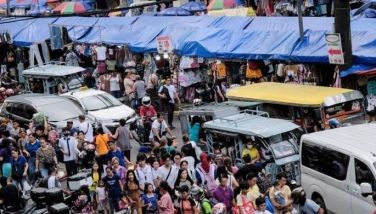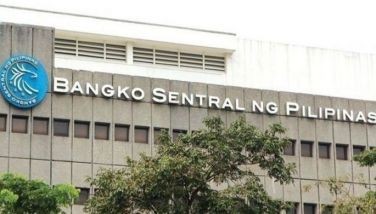Airport reform

For a country that wants a flourishing tourism industry and to attract foreign investors, we have failed to welcome our guests at our airports in a manner that would leave a good first impression. On the contrary, we give an airport experience that will encourage our visitors to make a quick U-turn and board the next flight out. NAIA lives up to its reputation as one of the most stressful airports in Asia.
Why do our airport officials find it so difficult to professionally run our airports? Our ASEAN neighbors have been running theirs well for years now. I am always reluctant to travel even domestically because of the horrifying experience I get the few times I agree to travel. The less I have to do with our airports, the better it is for my physical and mental health.
But my UP Prep high school classmates are more adventurous or should I say more masochistic? The NAIA airport manager, Eric Ines, is a fellow UP Prepian but the management of the airport has remained as bad as ever.
Three classmates recently went to Jakarta to play golf, flirt with the pretty caddies and try the new bullet train to Bandung provided by China. So, I get this distressed message past midnight of their return home: “Our plane landed at 10:40 p.m., SQ 918. At Terminal 3. The plane waited on the apron for one hour for a parking slot. Then it took another 1.5 hours to clear immigration and get our luggage. Walkalator, escalator out of service. Claim carousel seems never maintained – all torn-up na. I got home three hours later at 2 a.m. in Quezon City. Hayy! Welcome home!”
I checked what went wrong. Apparently, NAIA had a taxiway congestion and a breakdown of the boarding bridges. Those boarding bridges had always been problematic at Terminal 3. I understand that those lightning alerts need not paralyze all operations if NAIA had the right equipment in their boarding bridges that will allow an incoming plane to attach to it without help from people on the ground waving semaphore flags. The planes using NAIA are mostly state of the art in required equipment but T3 is not.
When I finally agreed to visit Iloilo the other week, I wasted part of the morning and the whole afternoon waiting for my flight. The PAL flight was delayed. If it left Manila on time, we wouldn’t have been caught in a lightning alert. And because flights backed up, Terminal 2 was like Divisoria in the Christmas season… wall to wall people. It was difficult getting to our twice reassigned gate. It is so third world.
I am sure many of us can’t wait for San Miguel to take over NAIA. That won’t happen until September.
The problem is really the government and the way it is run. I found out that the air conditioning system at the Iloilo Airport had not been fully operational, a torture for passengers in this El Niño heat. But Civil Aviation Authority of the Philippines (CAAP) says they took all of five months to “download” their approved budget so they could order the chillers from Japan. Download, from what I understand, means getting their money from the Treasury deposited to CAAP’s or Department of Transportation’s (DOTr) account so they can order the chillers.
But why did the existing chillers conk out? Most likely because of lack of maintenance or inadequate maintenance, also because they don’t have the funds. CAAP makes money running airports but everything is deposited to the Treasury and they can only use what Congress budgets for them. So unfair to the users of the airport who are paying airport fees of all kinds to get proper service. That’s why the only hope for our regional airports is to be taken over by the private sector operators like in Mactan.
If you ask CAAP officials, they would rather just be responsible for regulation and running the flight control system. As one official told me, CAAP is supposed to provide oversight and regulation. There are too many airports to run and operate. Operating airports is a negative finding of International Civil Aviation Organization (ICAO). We were asked to fix this distraction to CAAP’s principal mission of regulating and assuring the public safe flights by legislation.
That is also the point raised by the Joint Foreign Chambers (JFC), in a letter to the Senate. They called for the approval of crucial legislative measures aimed at overhauling the governance framework of the country’s airports.
Specifically, the JFC emphasized the importance of (1) law amendments to strengthen CAAP’s role in safety oversight by enhancing human resource development, fortifying the board and aligning with global safety standards, (2) the creation of the Philippine Airports Authority to separate the conflicting functions of the CAAP as an airport regulator and operator and (3) the creation of the Philippine Transportation Safety Board to strengthen the government’s ability to investigate accidents and improve safety because CAAP and Philippine Ports Authority (PPA) have conflicts of interest investigating accidents that could have happened due to their negligence.
The foreign business chambers wrote the letter after numerous flights in and out of NAIA were delayed due to a technical issue with the navigational air traffic management system. “These reforms are essential to enhancing the safety, efficiency and overall quality of both domestic and international airports in the Philippines,” the Chambers emphasized.
The JFC is a coalition of the American, Australian-New Zealand, Canadian, European, Japanese and Korean chambers and Philippine Association of Multinational Companies Regional Headquarters Inc. (PAMURI). They represent over 3,000 member companies engaged in over $100 billion worth of trade and some $30 billion worth of investments in the Philippines. The JFC supports and promotes increased foreign investment and improved conditions for business to benefit both the Philippines and the countries they represent.
Hopefully, the required legislative measures to reform the management of our airports are passed soon.
Boo Chanco’s email address is [email protected]. Follow him on X @boochanco
- Latest
- Trending






























